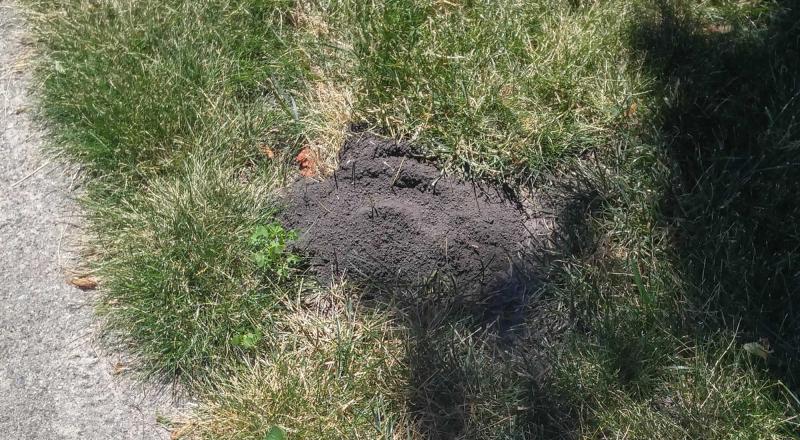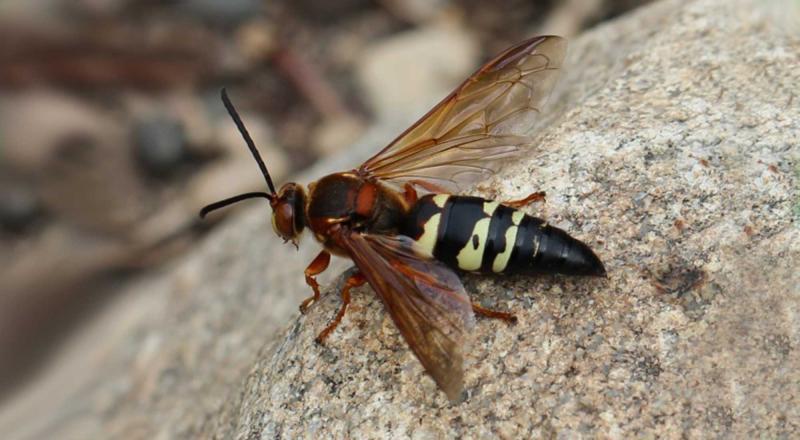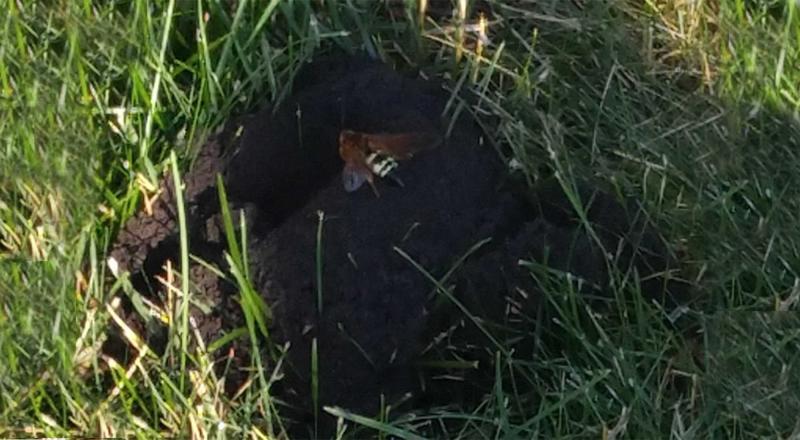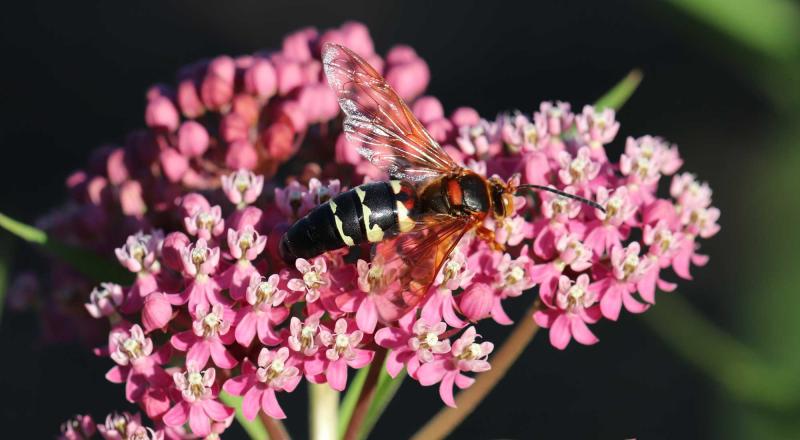
Originally Submitted: July 7, 2021
The cicada killer wasps are active in South Dakota, which means cicadas are probably not far behind. Each year, the most frequent question we are asked about cicada killer wasps is how to kill them. These wasps attract attention, because their nests are easily noticed when they are near sidewalks, flower beds and gardens (Figure 1). Nests in these high-traffic areas can result in the wasps flying close to people, which gets interpreted as a threatening behavior. Although bee and wasp stings can present issues for individuals with allergies to the venom, cicada killers aren’t known for being aggressive stinging insects.
As their name implies, cicada killer wasps use cicadas as a food source. They can present an impressive spectacle if you observe one of these wasps carrying a paralyzed cicada from a tree. Although cicada killer wasps seem formidable due to their size and helicopter sounding wings, they are not aggressive to humans. However, there are instances where they will sting (e.g., accidentally crushing them against a surface). Many people get into trouble with social wasps, like paper wasps and yellow jackets, because they disturb their nest, and then the wasps defend it with stings. Since cicada killers are solitary, they don’t follow that pattern of behavior and do not need to be feared.
Our advice to anyone who has these large wasps in their yards or gardens is to simply leave them alone. Occasionally, the male cicada killers will display territorial behaviors around a nest. However, even during these displays, the male is simply using its size and buzzing noise to scare away potential invaders. Male cicada killers present no threat of a sting, because they don’t even have a stinger!
Identification

The adult cicada killer wasps can vary in size from 1 ½ to 2 inches in length, which makes them one of the largest wasps encountered in South Dakota. The cicada killer adults have a reddish-brown thorax (area directly behind the head) and black abdomen with yellow banded markings (Figure 2). These wasps are often observed hovering close to the ground near mounds of excavated soil. The mounds are created when the female wasps dig tunnels in areas of bare, dry or sandy soil to create a nest. Cicada killer wasps can often be seen near garages, patios, sidewalks, retaining walls and playgrounds.
Lifecycle

Cicada killers are solitary wasps, which means the females dig nests and provision their eggs alone. However, there are often multiple wasps using the same area of suitable habitat in a yard. The female cicada killers hunt cicadas and other large insects near their selected nesting site (Figure 3). Once prey is caught, the wasp paralyzes it using her stinger and carries it back to her nest. She will then lay an egg on the prey and bury it. When the egg hatches, the larva will consume the prey, spin a cocoon, and overwinter in the soil. With suitable environmental conditions, new adult cicada killer wasps will emerge from the same area during the following year. The adult cicada killer wasps are often observed on flowering plants, which are used as a nectar food source (Figure 4).
No Need to Manage

As mentioned, we receive many questions regarding the management of cicada killer wasps. A lot of these cases are the result of people feeling threatened by having large wasps in their yard. In other cases, it’s because the excavated soil around nests appears to be destroying property. Although they do cause minor disturbances in lawns and gardens, these wasps are benign. Cicada killer wasps may look deadly, but in reality, they are rarely aggressive towards humans or pets. For the most part, the only time cicada killers respond to human activity is when the males are patrolling an area and may buzz around people or pets. If cicada killers are nesting in an undesirable location, the long-term solution is to amend the habitat in that area (e.g., replanting grass, mulching, etc.). As long as an area remains bare, with loose or sandy soil, it has an increased chance of being utilized by subsequent generations of cicada killer wasps.


